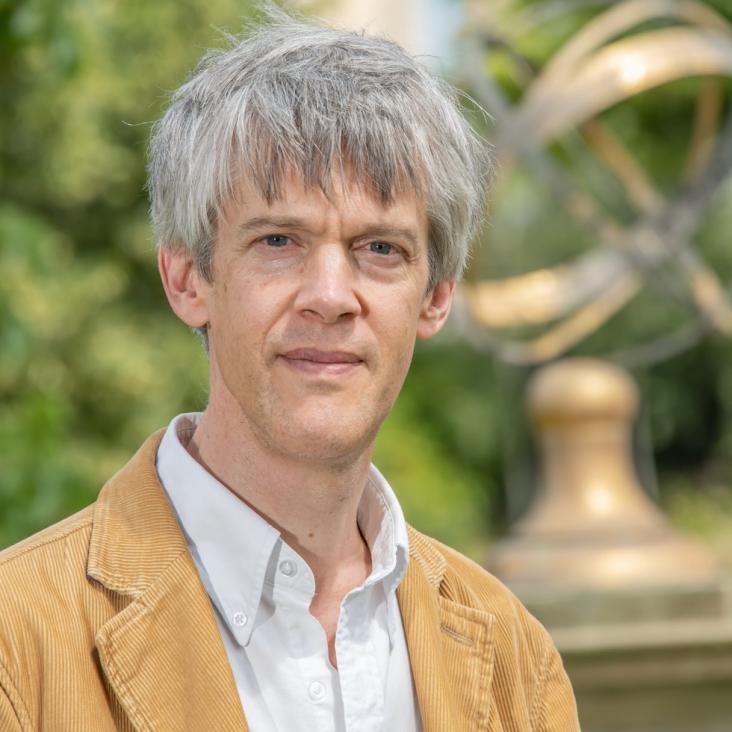Modeling the age of the Cape Riva (Y-2) tephra
Radiocarbon 55:2-3 (2013) 741-747
Abstract:
Tephra from the Cape Riva (Y-2) eruption of Santorini has been found across the eastern Mediterranean. It presents an important link between marine and terrestrial records. A Poisson process (P Sequence) age-depth prior, with model averaging, is used to model individual previously published radiocarbon sequences, cross-linked with an exponential phase model parameter to obtain a robust age. Multiple sequences and 14C determinations from 3 eastern Mediterranean data sets (Seymour et al. 2004; Margari et al. 2009; Müller et al. 2011; Roeser et al. 2012) are used in the model. The modeled age of the Y-2 tephra produced within this study is 22,329-21,088 cal BP at 95.4% probability. © 2013 by the Arizona Board of Regents on behalf of the University of Arizona.Recent and planned developments of the program oxcal
Radiocarbon 55:2-3 (2013) 720-730
Abstract:
OxCal is a widely used software package for the calibration of radiocarbon dates and the statistical analysis of 14C and other chronological information. The program aims to make statistical methods easily available to researchers and students working in a range of different disciplines. This paper will look at the recent and planned developments of the package. The recent additions to the statistical methods are primarily aimed at providing more robust models, in particular through model averaging for deposition models and through different multiphase models. The paper will look at how these new models have been implemented and explore the implications for researchers who might benefit from their use. In addition, a new approach to the evaluation of marine reservoir offsets will be presented. As the quantity and complexity of chronological data increase, it is also important to have efficient methods for the visualization of such extensive data sets and methods for the presentation of spatial and geographical data embedded within planned future versions of OxCal will also be discussed. © 2013 by the Arizona Board of Regents on behalf of the University of Arizona.Identification and correlation of visible tephras in the Lake Suigetsu SG06 sedimentary archive, Japan: Chronostratigraphic markers for synchronising of east Asian/west Pacific palaeoclimatic records across the last 150 ka
Quaternary Science Reviews 67 (2013) 121-137
Abstract:
The Lake Suigetsu SG06 sedimentary archive from Honshu Island, central Japan, provides a high-resolution palaeoenvironmental record, including a detailed record of explosive volcanism from Japan and South Korea. Thirty visible tephra are recorded within the 73 m-long SG06 core, which spans the last ∼150 ka. Here we describe and characterise these tephras based on major element glass composition, which is useful for the identification and correlation of these tephras and the age models of the records in which they are found. Utilising the large number of radiocarbon measurements (n > 600) from terrestrial plant macrofossils in the Lake Suigetsu SG06 record, we are able to provide precise and accurate ages for the tephras from eruptions within the last 50 ka. Glass compositional data of some of the largest eruptions from Japan (K-Ah, AT, Aso-4, Aso-A, Aso-D, and Ata; sampled at proximal outcrops) are also presented. These data show that the major element glass chemistry is distinctive for many of the visible SG06 tephra units, and allows some of the layers to be correlated to known eruptions from volcanoes in Japan and South Korea, namely K-Ah (SG06-0967), U-Oki (SG06-1288), AT (SG06-2650), Aso-4 (SG06-4963/SG06-4979), K-Tz (SG06-5181), Aso-ABCD (SG06-5287) and Ata (SG06-5181). The following ages were obtained for the SG06 tephra units: 3.966-4.064 cal. ka BP (95.4% probability range) for the SG06-0588 tephra, 10.242-10.329 cal. ka BP (95.4% probability range) for SG06-1293, 19.487 ± 112 SG062012 ka BP (2 σ) for SG06-1965, 28.425 ± 194 SG062012 ka BP (2 σ) for SG06-2504, 28.848 ± 196 SG062012 ka BP (2 σ) for SG06-2534, 29.765 ± 190 SG062012 ka BP (2 σ) for SG06-2601, 29.775 ± 191 SG062012 ka BP (2 σ) for SG06-2602, 43.713 ± 156 SG062012 ka BP (2 σ) for SG06-3485, 46.364 ± 202 SG062012 ka BP (2 σ) for SG06-3668, 49.974 ± 337 SG062012 ka BP (2 σ) for SG06-3912, 50.929 ± 378 SG062012 ka BP (2 σ) for SG06-3974, and improved ages for two of the most important tephra markers across Japan, the K-Ah (7.165-7.303 cal. ka BP at 95.4% probability range; SG06-0967) and AT tephra (30.009 ± 189 SG062012 ka BP at 2 σ; SG06-2650). © 2013.Comments on the use of Ezee-filters™ and ultrafilters at ORAU
Radiocarbon 55:1 (2013) 211-212
Abstract:
We report variations in age of recent batches of ultrafilter humectant, and also clarify the pore size of Ezeefilters™ used at the Oxford Radiocarbon Accelerator Unit (ORAU). © 2013 by the Arizona Board of Regents on behalf of the University of Arizona.Bayesian modelling of an absolute chronology for Egypt's 18th Dynasty by astrophysical and radiocarbon methods
Journal of Archaeological Science 40:1 (2013) 423-432


